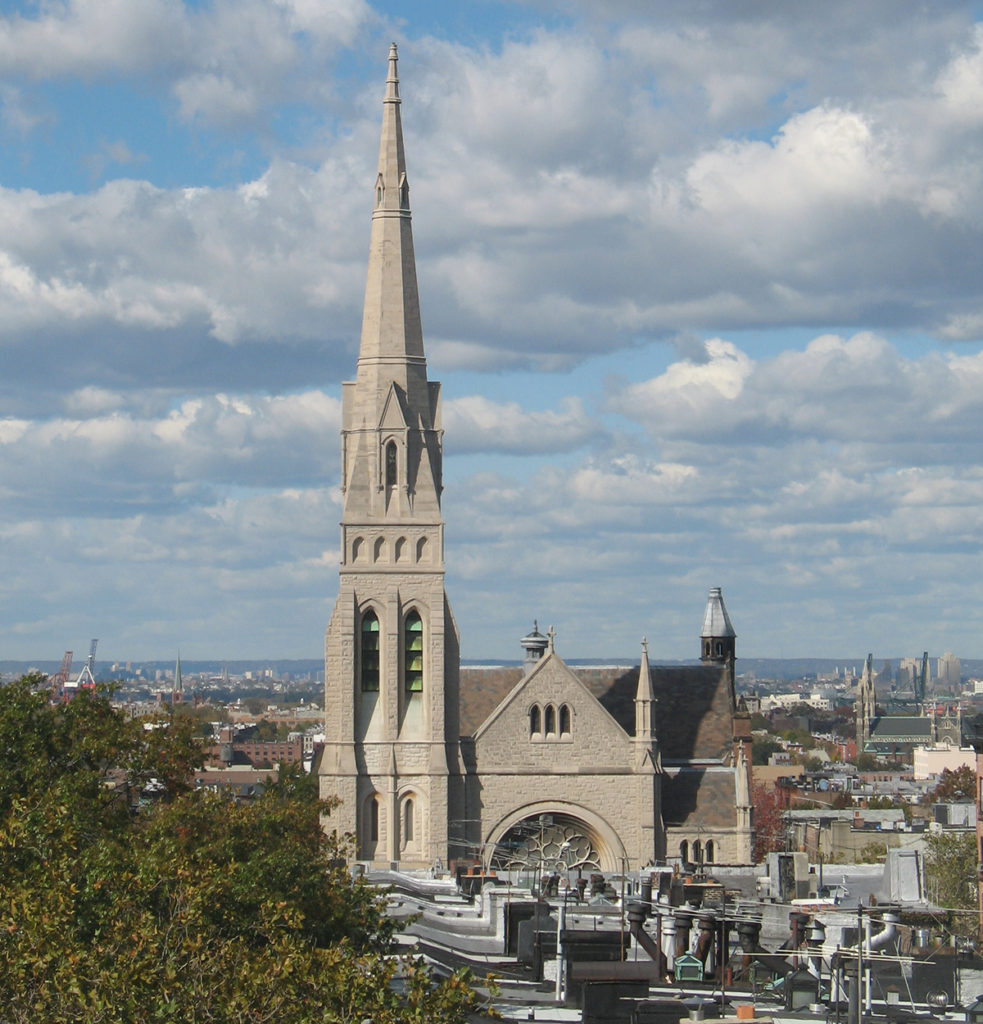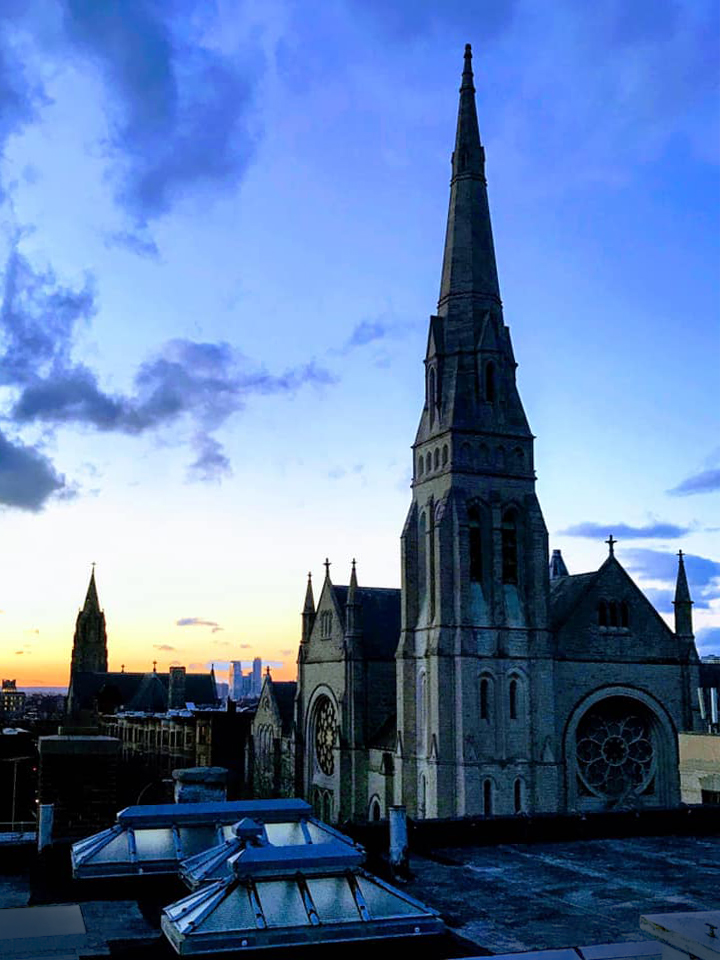Architecture
Dedicated in 1891, the towering cathedral we now use for worship is a Neo-Gothic structure, accented by dramatic stained-glass windows and a solid granite foundation. The spire, which can be seen for miles, is made of Indiana limestone (as is the facade itself). 212 feet in height, it is the tallest live-stone steeple in Brooklyn. It contains no interior structure of wood or steel.

The structure was designed by the legendary George L. Morse, one of the borough’s most respected and successful 19th century architects. Morse was founder and president of the Department of Architecture of the Brooklyn Institute of Arts and Sciences, precursor of the Brooklyn Museum, where he began the formalization of architecture as a profession and initiated the development of licensing standards. He was named a Fellow of the American Institute of Architects (AIA) in 1894.
According to Joseph Korom’s 2013 book, Skyscraper Facades of the Gilded Age: Fifty-One Extravagant Designs, 1875-1910, Morse is credited with single-handedly giving early Brooklyn a skyline of its own as well as producing countless Brooklyn homes and offices. Old First was his only church, expanding his reputation of creating skyline onto the crest of the slope.
Although much of Morse’s notable downtown work was razed during the modern-minded reign of New York City planner Robert Moses in the 1930s, our church, built in Park Slope, has been preserved and remains a living monument to his genius. Recently many local churches have fallen to the wrecking ball — the idea of destroying Old First in the name of new condos or offices would be unthinkable today.
Here is a link to a factsheet-in-progress about George L. Morse and his work.
We also know something of the builders of Old First, J. H. Stevenson & Son. James Hay Stevenson, Sr., a plasterer, arrived in Brooklyn from Edinburgh, Scotland, in September of 1836. By the time he died in 1868, he had advanced to master mason and established his firm. Sons who emigrated with him were John, mason and builder; James Hay, Jr, mason, plasterer and builder; and Robert, mason and plasterer. J. H. Stevenson & Son was awarded the contract as masons for Old First — the first contract to be granted by Morse. James Hay, Jr. died in December 1891, just two months after the dedication of Old First. ( A fourth son, Thomas Forsyth Stevenson, was a mechanical engineer and not part of the family business. ) Third generation Stevensons employed by J.H. Stevenson & Son during the time Old First was built were John Stevenson (son of John) plasterer and mason, James Parker Stevenson (son of James Hay, Jr.) builder, Walter Stevenson, mason and his brother Charles DeWitt Stevenson (sons of Robert} contractor and mason, who died at age 23 one week before the dedication of the building. It seems we owe a debt of gratitude to the Stevenson family.

One of the daughters of John Stevenson was Augusta Charlotte Stevenson who married John A. Anderson, chairman of Chas. Pfizer Co. ( Pfizer Inc.) founded in Brooklyn in 1849. Their son George A. Anderson was a director and former president of Pfizer.
